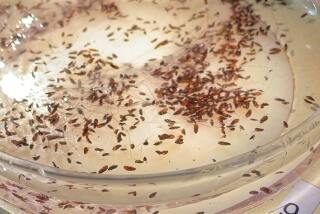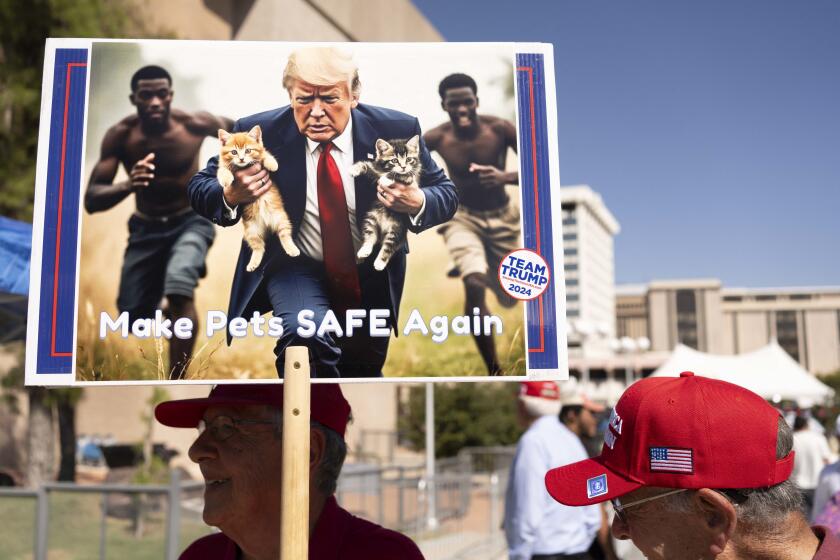Editorial: About those rats in L.A. City Hall
So it seems there are rats in City Hall — but not the kind you may have in mind. The variety recently found in Los Angeles’ corridors of power is small, furry and apparently harboring disease. One ailment in particular has officials in an uproar: typhus, a flea-borne infectious disease rare in the United States that’s most associated with the poor sanitary conditions of centuries past.
A recent report that one city worker had contracted the disease, combined with the discovery that rats had infested some city buildings, prompted an immediate response from local officials that may include replacing all the carpeting in City Hall. But more frightening than the infestation of diseased rats inside City Hall is the public health crisis going on outside its doors, in places throughout the city where homeless Angelenos live in tents on sidewalks and underpasses during rainy, cold weather. Those conditions make them more susceptible to all manner of illness, including those borne by rats.
As city officials now know, rats can turn up just about anywhere.
To be clear, there is no evidence that outbreaks of typhus are caused by homeless encampments. There were 19 cases of typhus reported in downtown Los Angeles in 2018, fewer than half of them from the homeless population, according to the Los Angeles County Public Health Department. Still, typhus is becoming less and less rare in the United States, in encampments and elsewhere.
Typhus has long been present at low levels in Los Angeles and Orange counties, but reported infections have been on the rise for more than a decade. In 2009, California public health authorities reported 18 confirmed or suspected cases statewide. Last year, there were 167. The type of typhus circulating in California is less deadly than other varieties found in Africa and Central and South America, but it is still a serious disease that can cause death if not treated and lifelong complications even if it is.
Don’t confuse typhus with typhoid fever, a different illness with similar symptoms. Typhus is spread by fleas that have been infected with Rickettsia typhi or Rickettsia felis bacteria; typhoid is conveyed by food or water contaminated with salmonella typhi bacteria. People can be infected with typhus if they are bitten by the fleas carried by rats, possums and feral cats, or if they come into contact with infected flea feces.
When a typhus outbreak was reported in Los Angeles in October, the city focused on the skid row area downtown, stepping up power-washing of streets, removing piles of trash and cleaning out rat burrows. It also did something that advocates have been seeking for years: putting out bins for homeless people to dump their trash into, and then emptying the bins frequently.
It’s good that city officials showed they could mobilize quickly to address a specific health threat, but it’s frustrating that they don’t apply the same sense of urgency to the sanitation issues for people living on the streets — like supplying more bathrooms on skid row and more storage places so homeless people don’t have to constantly haul their belongings around dirty streets.
Enter the Fray: First takes on the news of the minute »
Of course, trash collection should continue downtown, but the same service should be extended to encampments citywide whose residents generate trash like everyone else in Los Angeles. Even when the city was focusing on cleaning up trash in skid row in October, it was ignoring trash piles just a few blocks away. As city officials now know, rats can turn up just about anywhere. So too can other infections and illnesses that are exacerbated by unsanitary conditions and exposure to the elements, such as pneumonia, influenza and hepatitis A. And now, evidently, typhus too.
City officials need to recognize how important it is to address the daily, ongoing hygiene needs of all homeless Angelenos and not just wait for the excuse of an outbreak to take action. Meeting those needs will take a lot more work than ripping up the carpeting in City Hall or steam-washing a few sidewalks.
Follow the Opinion section on Twitter @latimesopinion and Facebook
More to Read
A cure for the common opinion
Get thought-provoking perspectives with our weekly newsletter.
You may occasionally receive promotional content from the Los Angeles Times.










